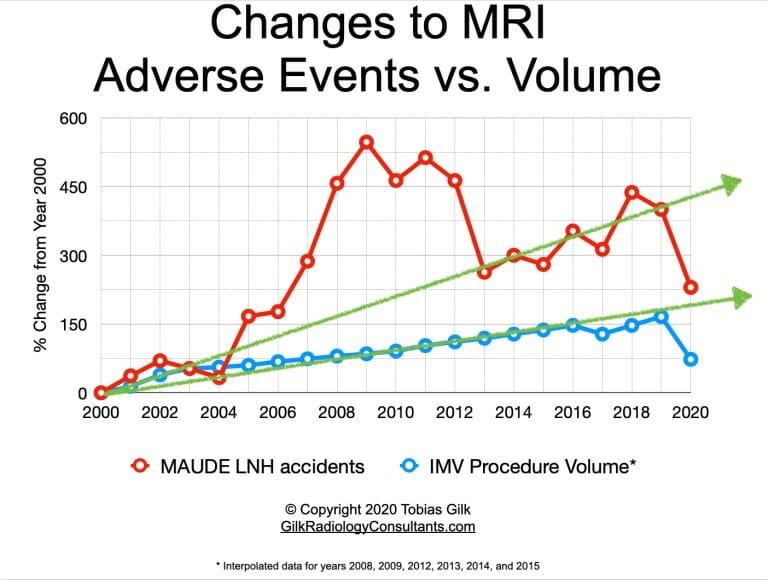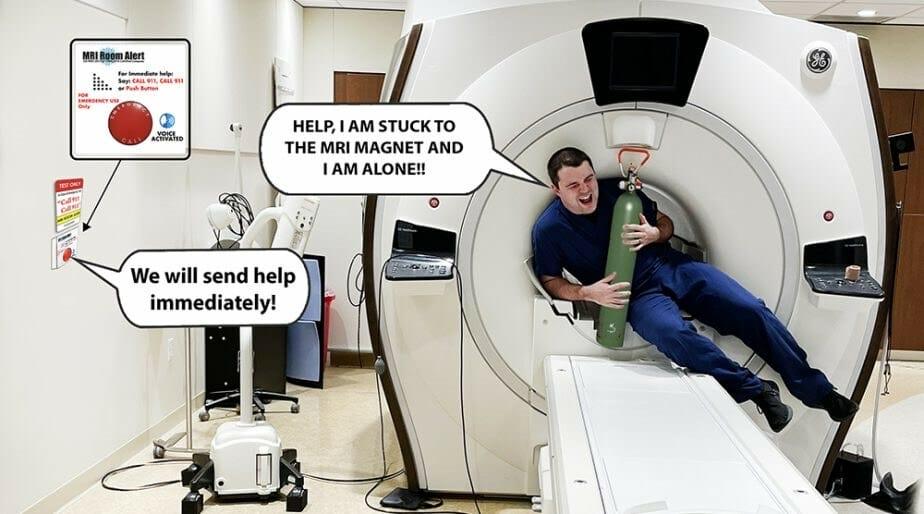Have you ever needed help in the MRI room? From something as simple as asking for additional lifting help in MRI, or worst-casescenario something ferromagnetic is pinning you to the MRI scanner and you are unable to get help? Look no further than the new innovative product produced by Sound Imaging, The MRI Room Alert! The MRI Room Alert is mounted to a wall inside the MRI room and upon a press of a button or a voice activated word it becomes a speaker phone to the outside world! It can call, email, or text several user defined numbers to ensure the proper safety trained personnel are notified that MRI needs help!


While MRI is the most dangerous room in a healthcare facility no options currently exist to get technologists the qualified help they sometimes need. MRI accidents are rapidly expanding at an alarming rate so why should the only room without the ability to call for help also be the most dangerous? Some have said “well this is never a problem at my facility as we follow the ACR MRI Safety Guidelines and always staff 2 MRI safety trained personnel.” While I believe this is an excellent policy and certainly the gold standard for MRI safety, we all know there are times where there is only one person in MRI. Perhaps your coworker is getting the next patient ready, perhaps they have gone on a lunch break, had to use the restroom, or are in a meeting etc. While these are mostly short times when bad things happen in MRI it happens so quickly. For more information visit MRIRoomalert.com.
Gilk, T. (2020, April 15). Alarmingly, the more we know about MRI, the more we seem to hurt people. LinkedIn. https://www.linkedin.com/pulse/alarmingly-more-we-know-mri-seem-hurt-people-tobias-gilk-mrso-mrse
 Editors Note: Mitchell Cardinal RT (R)(MR)MRSO(MRSC) is an MRI technologist and Certified MRI Safety Officer by trade. He has worked with many technologists who helped advance and develop him. He has attended seminars by the likes of Dr Kanal and also Bill Faulkner. All parts of his training have led him to where he is now – as a technologist, and have all helped build his career including working with Sound Imaging on several products. However, his personal pride and joy is the MRI Room Alert which he presented to Sound Imaging and has worked closely with to produce.
Editors Note: Mitchell Cardinal RT (R)(MR)MRSO(MRSC) is an MRI technologist and Certified MRI Safety Officer by trade. He has worked with many technologists who helped advance and develop him. He has attended seminars by the likes of Dr Kanal and also Bill Faulkner. All parts of his training have led him to where he is now – as a technologist, and have all helped build his career including working with Sound Imaging on several products. However, his personal pride and joy is the MRI Room Alert which he presented to Sound Imaging and has worked closely with to produce.